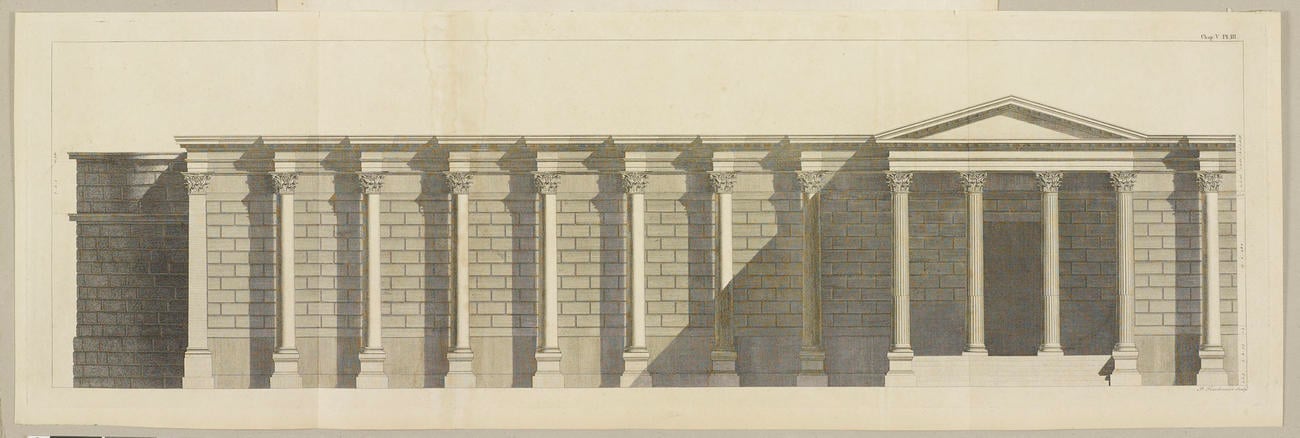James 'Athenian' Stuart (1713-88)
The Antiquities of Athens ; v. 1 / measured and delineated by James Stuart and Nicholas Revett. 1762
57.0 x 4.5 cm (book measurement (inventory)) | RCIN 1071103
-
Born in London in 1713, James 'Athenian' Stuart started his career as an engraver. In 1742 he visited Rome, where he lived for eight years. During this time he became a noted connoisseur of art and built up a network of similarly minded individuals. In 1748, Stuart, along with Nicholas Revett, Gavin Hamilton and Robert Brettingham decided that it was necessary to explore the antiquities of Greece considering only passing mentions of the influence of Greek Art and Architecture had been made since the Renaissance. Upon meeting Robert Wood and his friend James Dawkins, and receiving a subsidy for the expedition, Stuart joined the Society of the Dilettanti, a group of wealthy gentlemen founded to appreciate the antiquities of the Classical past. In 1751 Stuart and Revett arrived in Athens but were forced to leave three years later. Both men, however, had gathered enough drawings to publish the first volume of the "Antiquities of Athens" in 1762.
This influential four volume set, originally published between 1762 and 1816 provided inspiration for architects such as Sir John Soane and Sir Robert Smirke to design monumental buildings during the "Greek Revival" of the early nineteenth century. The volumes provided easy access for architects who found Greece difficult, or impossible, to visit due to Ottoman suspicions over European artists visiting the sites.
It can be seen from these volumes that Stuart regarded all architecture in Greece as "Greek", the first volume for instance, almost entirely consists of engravings of Roman and Hellenistic, rather than Classical Greek architecture. This was rectified in later volumes and Stuart was keen to insist that although he believed that all architecture in Greece was Greek, only the architecture from the Athenian Golden Age in the Fifth century BC was superior.
The Royal LIbrary set is rather complicated; of the four volumes, one is listed in historic inventories as being from George III's collection with at least two of the others coming from the collection of George IV. The whole set was re-bound during the reign of Queen Victoria and important provenance information has unfortunately been lost. -
Creator(s)
(printer) -
Measurements
57.0 x 4.5 cm (book measurement (inventory))
Other number(s)
ESTC : English Short Title Catalogue Citation Number – ESTC T22194








